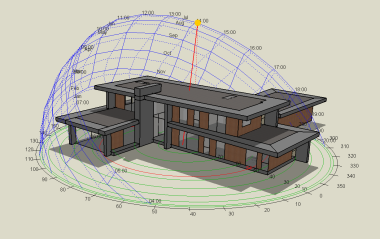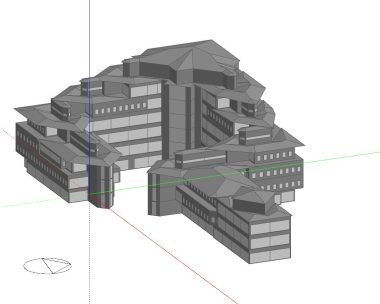Request a quote
Thanks for getting in touch
Thermal modelling is essential for designing energy-efficient buildings, especially in the UK, where sustainability and energy consumption are key concerns. Whether for residential or commercial projects, our advanced modelling techniques predict how buildings respond to various weather conditions, ensuring optimal energy use while maintaining comfort for its occupants.

What is Thermal Modelling?
Thermal modelling is a powerful tool that simulates how a building regulates temperature, evaluating key factors like insulation, heating, ventilation, air conditioning (HVAC), and natural environmental conditions.
As an architect or engineer it helps you predict a building’s performance, ensuring energy efficiency, occupant comfort, and a reduced environmental impact. It’s an essential part of the design process, supporting the creation of energy-efficient, comfortable, and sustainable buildings in both residential and commercial projects across the UK. By predicting and adjusting a building’s thermal performance before construction begins, thermal modelling ensures that every design is both cost-effective and energy-efficient, supporting the UK’s carbon reduction goals.
Why is Thermal Modelling Important in the UK?
Keep your project on track for an energy-efficient and sustainable build. By identifying potential risks early on, thermal modelling helps prevent costly changes to materials or design further down the line.
Integrating thermal modelling from the start allows architects and engineers to develop solutions that enhance long-term comfort, improve energy efficiency, and ensure compliance with UK building regulations.
1. Energy Efficiency & Cost Savings
With rising energy prices and the UK’s commitment to reducing carbon emissions, optimising your building’s energy use is more important than ever. Thermal modelling helps minimise energy waste, reducing heating and cooling costs in both residential and commercial properties.
2. Building Regulations Compliance
The UK has stringent building regulations, such as Part L and Part O of the Building Regulations, which require buildings to meet specific energy performance standards. Thermal modelling enables architects and engineers to test different design options to ensure compliance and improve thermal performance.
3. Sustainability & Net-Zero Goals
As the UK works towards achieving net-zero emissions by 2050, thermal modelling is key to designing buildings that minimise their carbon footprint. Opting for sustainable design practices like passive heating and cooling, helps reduce reliance on fossil-fuel-based energy systems, making buildings more energy-efficient and environmentally friendly.

Key Benefits of Thermal Modelling
- Optimised Energy Use: Ensure the building’s heating, cooling, and lighting systems are sized appropriately, resulting in significant energy savings.
- Enhanced Comfort: Identify areas of the building that may be prone to cold spots, overheating, or poor air quality, helping to ensure that occupants remain comfortable.
- Improved Building Performance: By testing different design options in a virtual environment, designers can make better-informed decisions, improving the overall performance of the building over its lifetime.
- Sustainability Goals: By reducing energy demand, thermal modelling contributes to the building’s overall sustainability, helping achieve environmental certifications like BREEAM or LEED.
Thermal modelling Services for Your BREEAM Assessment
As part of your BREEAM assessment, we offer the following thermal modelling services to help achieve BREEAM credits:
- Hea 01 – Visual comfort, Daylighting
- Hea 04 – Thermal comfort for naturally ventilated and air-conditioned buildings
- Ene 01 – Reduction of energy use and carbon emissions: Energy performance using SBEM or DSM (UK) or EnergyPlus (non-UK), and prediction of operational energy consumption
- Ene 04 – Low carbon design using EnergyPlus Simulation (and Detailed HVAC for free cooling system options)
Benefits
- Tailored service: designed specifically for your building project
- Expert guidance: accelerate decision-making and optimise designs for maximum efficiency
- Professional Support: Certified software, accurate results, and ongoing expert advice throughout the project
Associated Services
Take the First Step in Maximising Your Thermal Performance
Ready to optimise the thermal performance of your residential or commercial property? Contact our team of experts today! We offer comprehensive thermal modelling services tailored to the unique needs of your building project.
Request a quoteCall to Discuss




